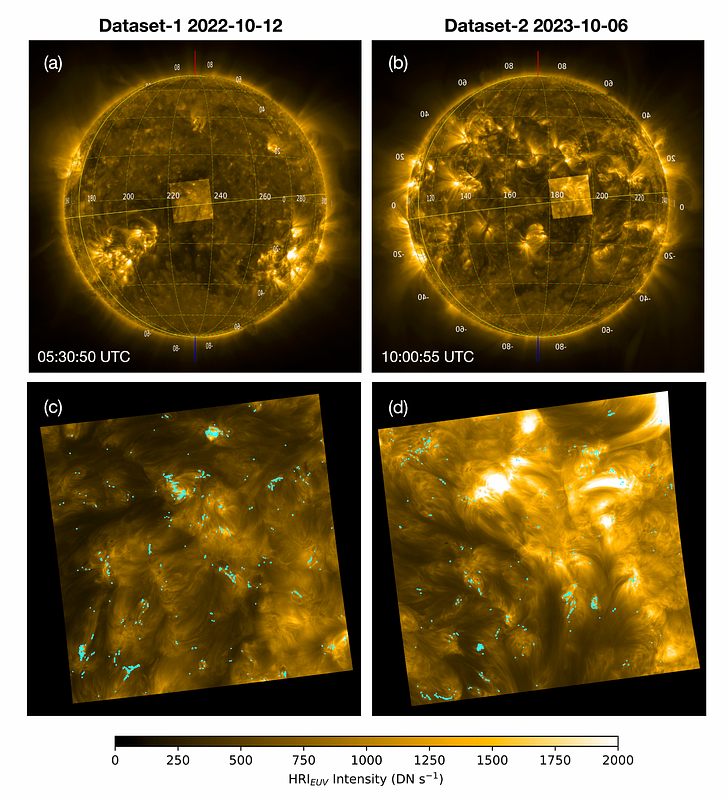Extreme-ultraviolet transient brightenings in the quiet-Sun corona : Closest-perihelion observations with Solar Orbiter/EUI

Extreme-ultraviolet transient brightenings in the quiet-Sun corona : Closest-perihelion observations with Solar Orbiter/EUI
Nancy Narang, Cis Verbeeck, Marilena Mierla, David Berghmans, Frédéric Auchère, Sergei Shestov, Véronique Delouille, Lakshmi Pradeep Chitta, Eric Priest, Daye Lim, Laurent R. Dolla, Emil Kraaikamp
AbstractThe extreme-ultraviolet (EUV) brightenings identified by Solar Orbiter, commonly known as campfires, are the smallest transient brightenings detected to date outside active regions in the solar corona. We investigate the spatio-temporal distribution of a large ensemble of the finest-scale EUV transient brightenings observed by the Extreme Ultraviolet Imager (EUI) aboard Solar Orbiter. We perform a statistical analysis of the EUV brightenings by using quiet-Sun observations at the highest possible spatial resolution ever obtained by EUI. We use observations in the 17.4 nm passband of the High Resolution EUV Imager (HRIEUV) of EUI acquired during the closest perihelia of Solar Orbiter in 2022 and 2023. Solar Orbiter being at a distance 0.293 AU from the Sun, these observations have an exceptionally high image scale of 105 km, recorded at a fast cadence of 3 seconds. We use a wavelet-based automatic detection algorithm to detect and characterise the events of interest, and study their morphological and photometrical properties. We report the detection of smallest and shortest lived EUV brightenings to date in the quiet-Sun. The size and lifetime of the detected EUV brightenings appear power-law distributed down to a size of 0.01 Mm$^{2}$ and a lifetime of 3 seconds. In general their sizes lie in the range of 0.01 Mm$^{2}$ to 50 Mm$^{2}$ , and their lifetimes vary between 3 seconds and 40 minutes. We find an increasingly high number of EUV brightenings at smaller spatial and temporal scales. We estimate that about 3600 EUV brightenings appear per second on the whole Sun. The HRIEUV brightenings thus represent the most prevalent, localised and finest-scale transient EUV brightenings in the quiet regions of the solar corona.